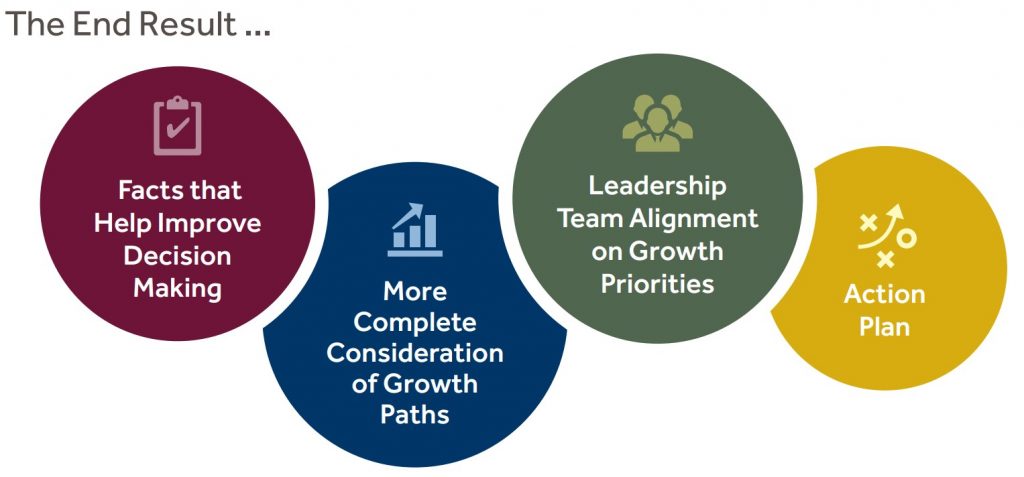Spark Day™ Fast Path for Accelerating Profitable Revenue Growth
Spark Day™ is a one-day event designed for your entire management team. The objective of the day is to align on a set of growth priorities uniquely appropriate for your business(es). The Spark Day™ is held at a location of your choosing and is led by senior professionals from Blue Ridge Partners. The CEO (or equivalent leader of the business) is essential for the entire Spark Day™ in order to guide the decision-making process.
Based on experience with over 400 companies, Blue Ridge Partners has developed a systematic approach for accelerating profitable revenue growth—called Growth from the Core™. This approach serves as the foundation for the analyses and discussion during Spark Day™.
There is often a bewildering assortment of levers that can be pulled to drive growth—adding new products, entering new end markets, expanding geographically, selling through new channels, digitizing the business, refining the sales messaging/positioning, restructuring the sales team, upgrading sales talent, adding more salespeople, changing the sales incentive plan, and many others. Without a clear understanding of the strategic, financial, and behavioral impact of these actions, it is easy to sub-optimize revenue performance.
Spark Day™ employs an analytic, systematic approach for considering each of these potential growth levers and for setting growth priorities. There are several outputs from the Spark Day™ but perhaps the most important is the Grid of Priorities based on two axes—EBITDA upside and ease of capturing the opportunity.
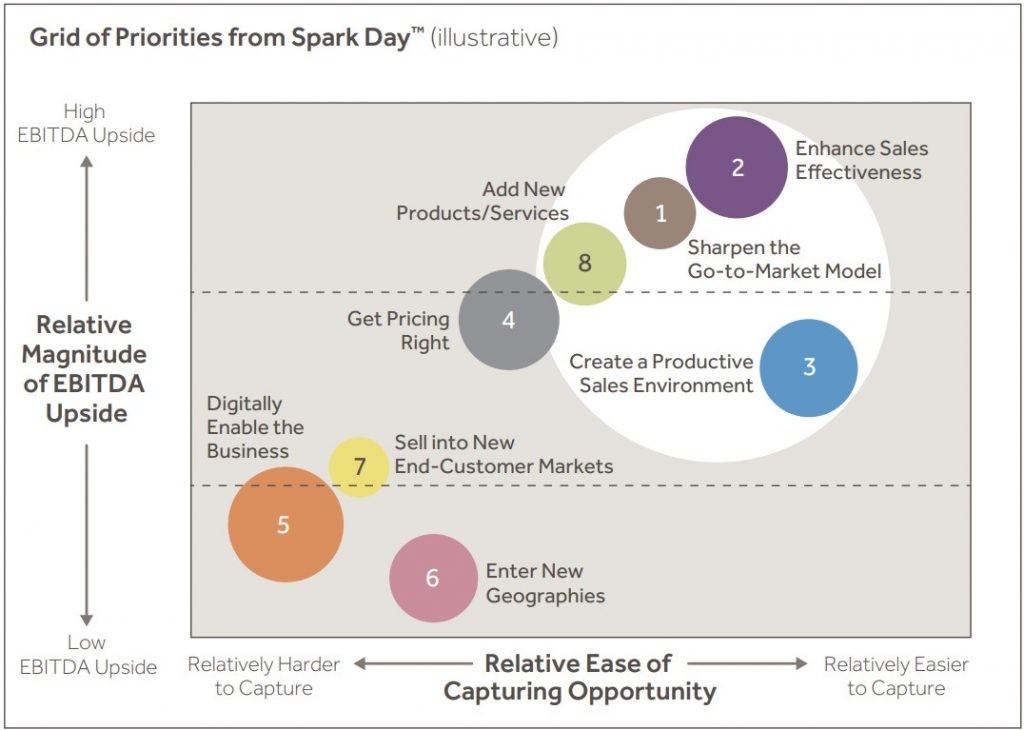
In order to maximize productive discussion during the Spark Day™ event, our approach includes assembling facts, management team opinions, and the expertise of both company and Blue Ridge Partners professionals. Using this input, we will conduct pre-event analysis and, in collaboration with management, select a list of topics to be covered during Spark Day™. As portrayed below, Blue Ridge Partners will complete the final step in the event process by delivering a customized set of actions for the management team.
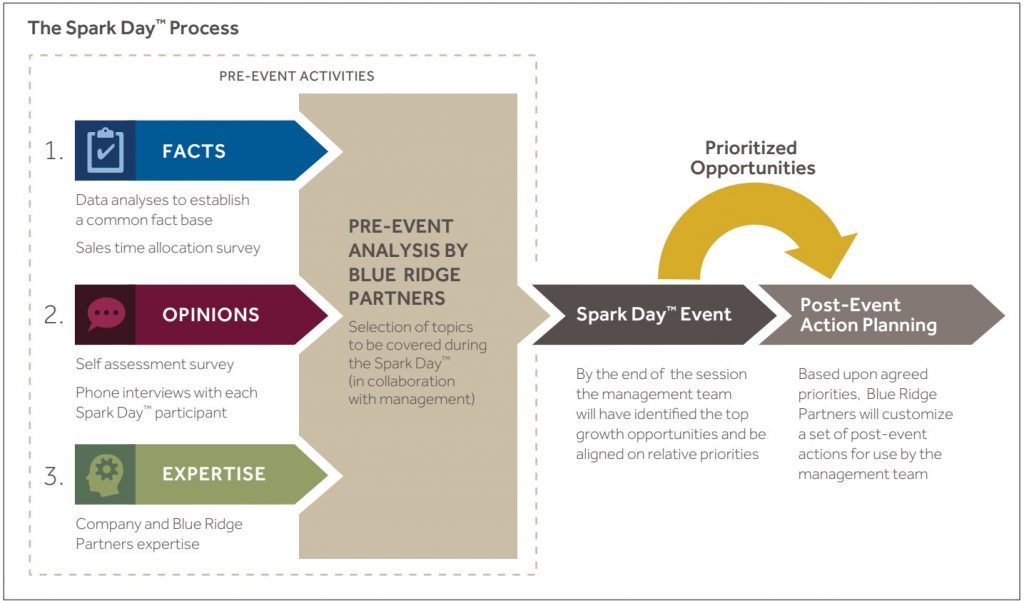
The substance for Spark Day™ is drawn from our systematic approach for accelerating profitable revenue growth—called Growth from the Core™, which is depicted in the chart to the left. All companies have a Core of their business that drives 80% of their EBITDA performance. This EBITDA is often generated from 20-50% of the end customers served, products/services offered, geographic markets, and channels used. Activities outside the Core (‘Non-Core’) are candidates for elimination, sale, or redesign if they are not economically and/or strategically attractive.
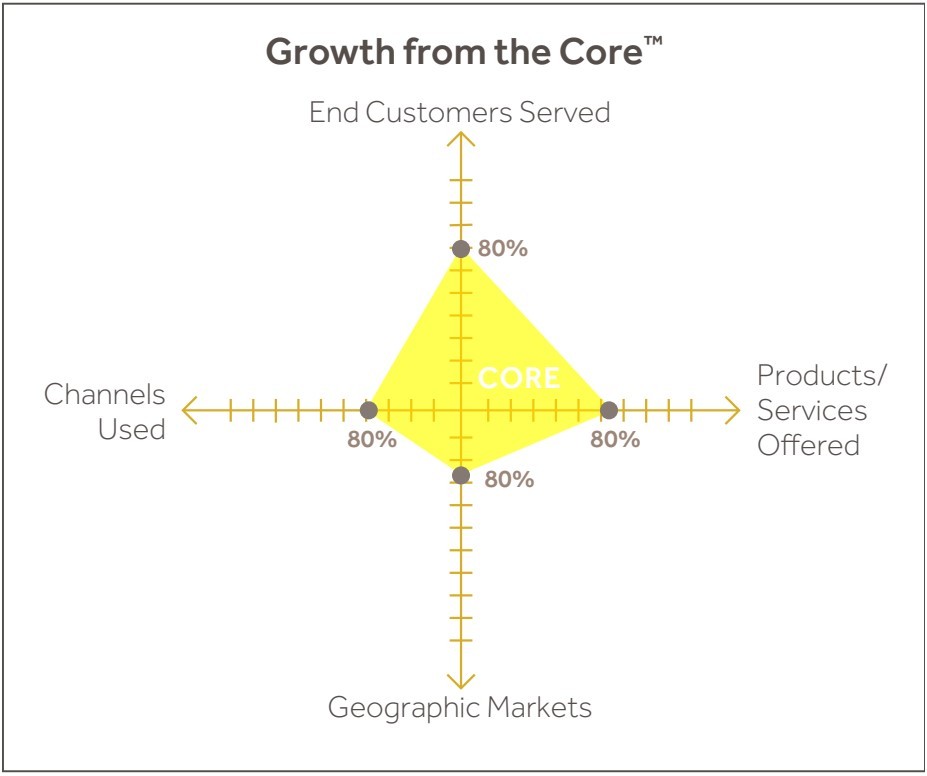
The topics covered during Spark Day™ will vary based on an analysis of the pre-event materials, chosen from among the following menu of topics:
Selecting the Growth Lanes for the Business—the morning
The morning of Spark Day™ begins with a discussion of the strategic choices made for the business (or that need to be made) regarding the size and dimensions of the core.
- Assess whether the company has wandered too far from its core—should the company narrow the range of customers served, products/services offered, channels used and geographies covered? This might suggest the need to trim back the unproductive and non-strategic parts of the business.
- Determine the magnitude of revenue and EBITDA growth opportunity from within the core of the business. Is it sufficient to achieve the growth targets for the business?
- If not, consider stretching further outside the core (in productive and strategic directions)
• Expand into adjacent end customer markets
• Expand the geographic footprint
• Add fundamentally new products and services
• Leverage new channels
The second section of the morning addresses other strategic issues that establish the overall growth lanes for the business.
- Define the desired mix of customer segments, product lines, channels used, and geographies—how might this mix shift impact the business?
- Determine if there are limitations imposed on revenue growth by operational inflexibilities, timescales, or costs
- Assess the transformative role of digital in your markets and your customers’ markets
- Determine the desired combination of organic vs. inorganic growth
Strengthening (and Perhaps Reinventing) the Core—the afternoon
This section of Spark Day™ focuses on improving sales execution structured around the “revenue equation” which is Number of Customers x Average Spend Per Customer = Total Revenue.
Increase the Number of Customers
- Add more new customers
- Improve customer retention
Increase the Average Spend Per Customer
- Capture a greater share of wallet from existing customers
- Improve effective pricing (“pocket price”)
Strengthen the Management of the Commercial Organization
- Improve the quality of front-line sales managers
- Strengthen the discipline of the sales reps and selling processes
- Optimize time allocation and capacity of the sales organization
- Align sales compensation plan with desired results
- Increase sales “clock speed”
Some of the Details Behind the Spark Day™
Spark Day™ events are supported by powerful tools and databases that can be referenced during the discussions with your management team. These tools and databases have been proven effective in our work with hundreds of companies.
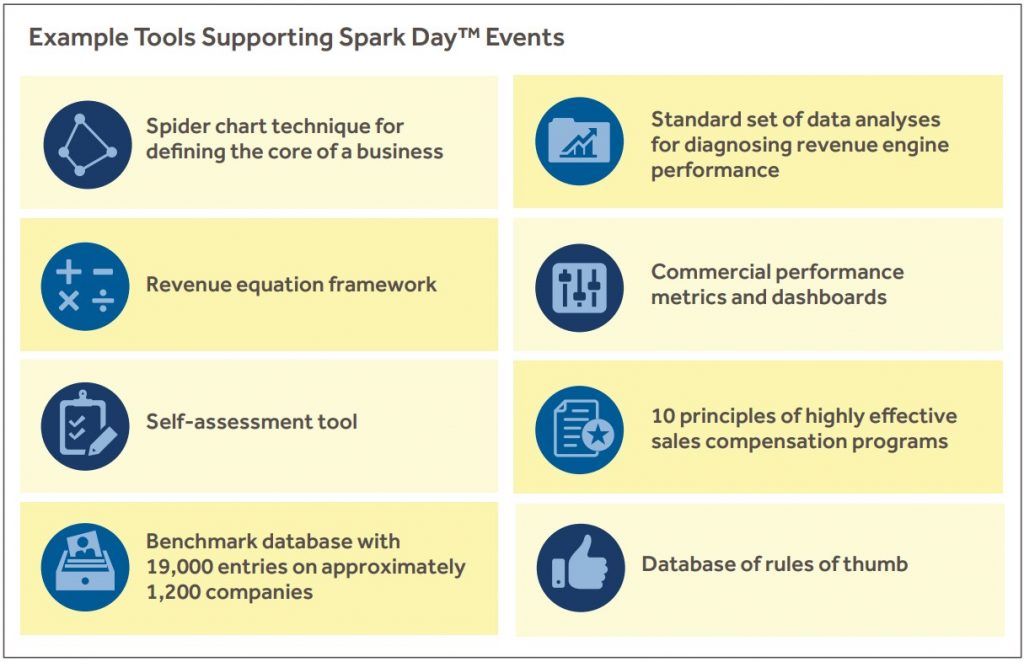
The pre-event materials, which are completed by the company at least one week in advance of the event, are based on several of these tools. This information is essential for a fact-based discussion during Spark Day™. A sample of a management team’s Self-Assessment Survey that was discussed at a Spark Day™ event is shown below.
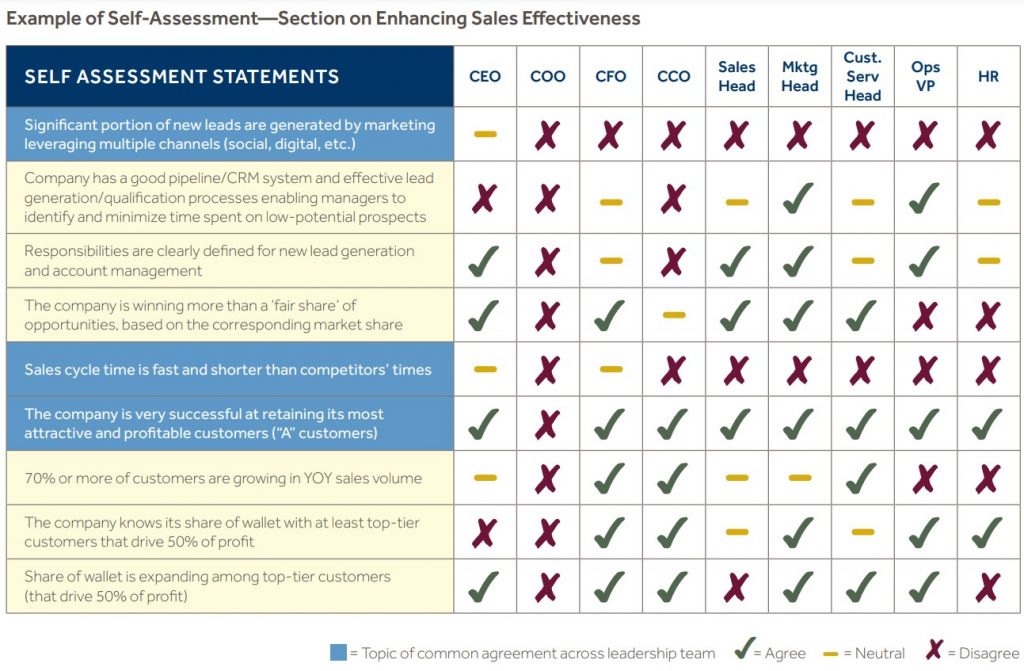
In addition to the self-assessment survey, we recommend that several data analyses be completed by the company in advance of Spark Day™. This data helps establish a common fact-base for all attending Spark Day™. The following are examples of some analyses we recommended for other companies:
- Definition of the core according to the 80% methodology (e.g., customer segments that cumulatively generate 80% of EBITDA)
- Sales time allocation between customer selling vs. other activities
- Revenue bridge to explain year-over-year growth – new, lost, growing, declining customers
- Profitability and win rates by product, customer segment, geography, and channel
- 2×2 of sales growth vs. compensation paid to each sales rep (and same chart of margin growth vs. compensation by sales rep)
- Scatterplot diagram of pricing relative to volume for 3-4 largest products or services
The topics covered in Spark Day™ are tailored to the characteristics of each company, considering the following factors:
- The structure of the business model—e.g., large ticket/long sales cycle businesses are different than transactional/short sales cycle businesses
- The nature of the go-to-market model—e.g., businesses that sell exclusively through a field sales force are different than companies selling primarily through distributors or other channel partners
- The position of the company on the commercial maturity curve—e.g., early stage/high growth businesses are different than mature/declining businesses
We suggest that companies having multiple business segments with substantially different combinations of the above factors should schedule separate Spark Day™ events—otherwise much of the time and energy will be unproductively consumed explaining and debating differences between business segments.
